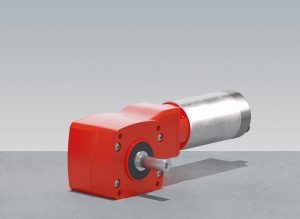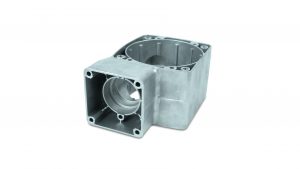Casting Study: Housing for low voltage angle gear drive
This casting is a segment of a multi-piece gearbox for 24/48 volt engines. The cost pressure in the market segment prompted the designers to rethink. A cost-effective production method for manufacturing the individual components that does not require any further processing steps was sought. Since various functional dimensions, such as fits of bearing bores or the evenness of sealing surfaces, only allow very small dimensional fluctuations in a gearbox, die-cast zinc was the first choice. The structural design of these gearboxes cannot be compared with existing gearbox series.
The design principle also followed the requirements for automated robot assembly. The design required a rethink and was specially adapted to the possibilities of die-cast zinc. No comparable implementation potential was seen in the use of other materials. The design engineers particularly valued the advantage of a very high dimensional stability of the components due to low process temperatures in the zinc die-casting process. A comparison with other technologies and materials did not reveal these advantages. The result convinces with very low tolerances, the implemented perpendicularity to the support is 0.08, reworking the fitting dimensions is not necessary. The jury was particularly impressed by the design of the casting tool, which enables the thin-walled inner ring to be implemented in the narrow gearbox housing.
The cast part was developed over several years of close and trusting cooperation between the companies Adolf Föhl and SEW-Eurodrive. Only through this close cooperation and regular joint workshops could this series of components and a successful know-how transfer be implemented.

